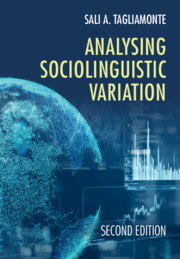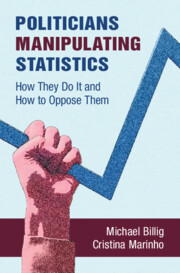Refine search
Actions for selected content:
278 results
Gauging the Black Undercount: Race and Censuses in Nineteenth-Century Buenos Aires
-
- Journal:
- Social Science History , First View
- Published online by Cambridge University Press:
- 09 December 2025, pp. 1-31
-
- Article
-
- You have access
- Open access
- HTML
- Export citation
An Unlimited Supply of Labor? Counting Workers and Planning Development in Mid-Twentieth-Century Egypt (1939–1960)
-
- Journal:
- International Labor and Working-Class History , First View
- Published online by Cambridge University Press:
- 03 November 2025, pp. 1-17
-
- Article
-
- You have access
- Open access
- HTML
- Export citation
Wine Stars & Bars: The combinatorics of critic consensus and the usefulness of order preference models
-
- Journal:
- Journal of Wine Economics , First View
- Published online by Cambridge University Press:
- 03 November 2025, pp. 1-14
-
- Article
-
- You have access
- Open access
- HTML
- Export citation
3 - Economic Statistics
-
- Book:
- The City's Defense
- Published online:
- 09 October 2025
- Print publication:
- 23 October 2025, pp 103-134
-
- Chapter
- Export citation
4 - The Global Emergence and Success of Counterrevolution
-
- Book:
- Return of Tyranny
- Published online:
- 17 September 2025
- Print publication:
- 23 October 2025, pp 83-117
-
- Chapter
- Export citation
6 - A Popular Mobilization and Egypt’s Counterrevolution
-
- Book:
- Return of Tyranny
- Published online:
- 17 September 2025
- Print publication:
- 23 October 2025, pp 170-202
-
- Chapter
- Export citation
From Figures to Flows: Planning Labor Emigration at the Emergence of a Modern Algerian Statistical State (1950s–1970s)
-
- Journal:
- International Labor and Working-Class History , First View
- Published online by Cambridge University Press:
- 22 October 2025, pp. 1-20
-
- Article
-
- You have access
- Open access
- HTML
- Export citation
Counting Workers in Côte d’Ivoire (1946–1960): Tensions and Debates Between the Colonial Administration, European Settlers, and African Planters
-
- Journal:
- International Labor and Working-Class History , First View
- Published online by Cambridge University Press:
- 09 October 2025, pp. 1-18
-
- Article
-
- You have access
- Open access
- HTML
- Export citation
Appendix A - Network Model Theory
-
- Book:
- Hands-On Network Machine Learning with Python
- Published online:
- 23 September 2025
- Print publication:
- 18 September 2025, pp 411-432
-
- Chapter
- Export citation
Chapter 5 - Evaluating Information Sources and Credibility
-
- Book:
- Knowledge Doesn't Exist and Other Thoughts on Critical Thinking
- Published online:
- 22 October 2025
- Print publication:
- 21 August 2025, pp 63-79
-
- Chapter
- Export citation
2 - Probability Theory
-
- Book:
- Statistical Mechanics for Physicists and Mathematicians
- Published online:
- 28 July 2025
- Print publication:
- 14 August 2025, pp 6-50
-
- Chapter
- Export citation
Chapter 2.12 - Statistics
- from Sec 2 - Pharmacology
-
- Book:
- Dr Podcast Scripts for the Primary FRCA
- Published online:
- 19 June 2025
- Print publication:
- 03 July 2025, pp 291-299
-
- Chapter
- Export citation

Analysing Sociolinguistic Variation
-
- Published online:
- 19 June 2025
- Print publication:
- 03 July 2025
Chapter 13 - Realism and Naturalism
- from Part III - Forms of Realism
-
-
- Book:
- Realism and the Novel
- Published online:
- 05 June 2025
- Print publication:
- 19 June 2025, pp 189-201
-
- Chapter
- Export citation
8 - Conclusion
-
- Book:
- Multilingual Environmental Communications
- Published online:
- 16 May 2025
- Print publication:
- 05 June 2025, pp 183-193
-
- Chapter
- Export citation

Politicians Manipulating Statistics
- How They Do It and How to Oppose Them
-
- Published online:
- 31 May 2025
- Print publication:
- 03 April 2025
5 - Physics, Clinical Measurement, Equipment and Statistics
-
- Book:
- The Anaesthesia Science Viva Book
- Published online:
- 02 May 2025
- Print publication:
- 22 May 2025, pp 477-594
-
- Chapter
- Export citation
Reflective error: a metric for assessing predictive performance at extreme events
-
- Journal:
- Environmental Data Science / Volume 4 / 2025
- Published online by Cambridge University Press:
- 24 April 2025, e26
-
- Article
-
- You have access
- Open access
- HTML
- Export citation
Chapter 1 - Introduction
-
- Book:
- Politicians Manipulating Statistics
- Published online:
- 31 May 2025
- Print publication:
- 03 April 2025, pp 1-9
-
- Chapter
-
- You have access
- HTML
- Export citation
Analysis of Paired Data
-
- Journal:
- Prehospital and Disaster Medicine / Volume 40 / Issue 2 / April 2025
- Published online by Cambridge University Press:
- 11 April 2025, pp. 61-63
- Print publication:
- April 2025
-
- Article
-
- You have access
- HTML
- Export citation
